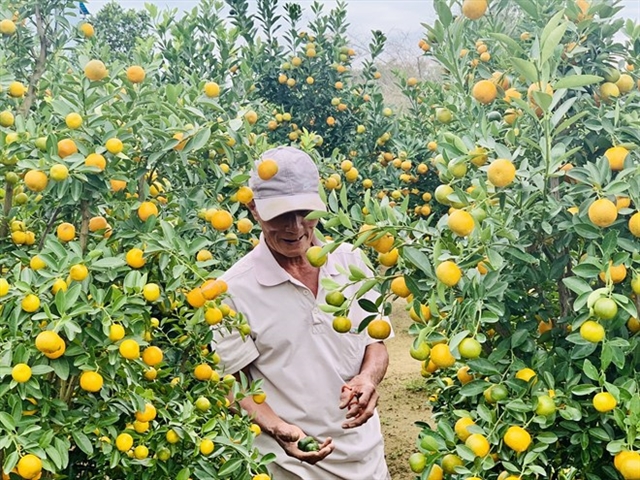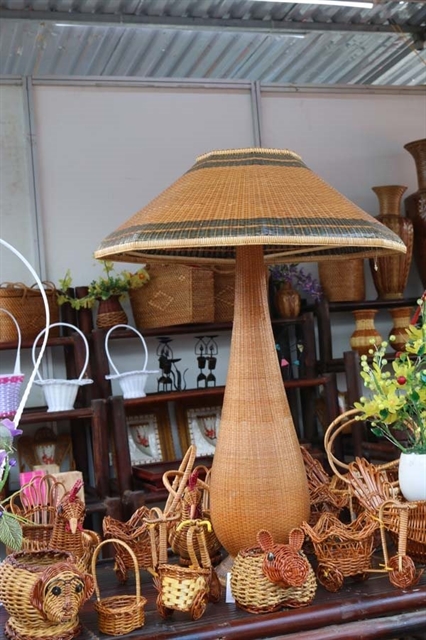 Sunday/Weekend
Sunday/Weekend
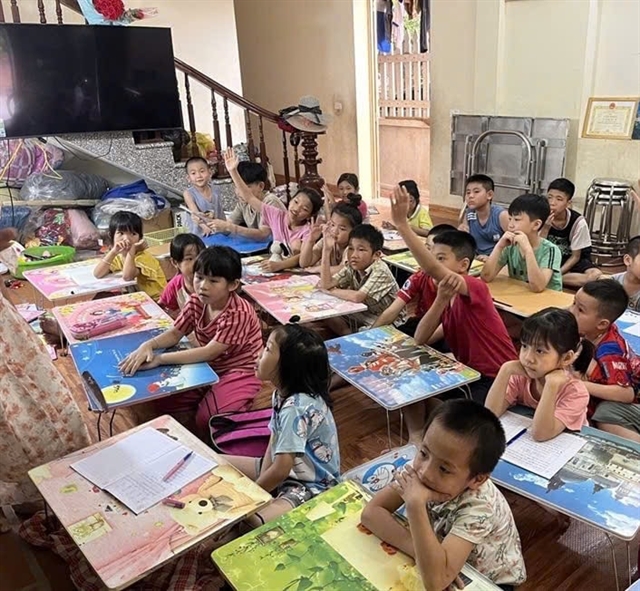
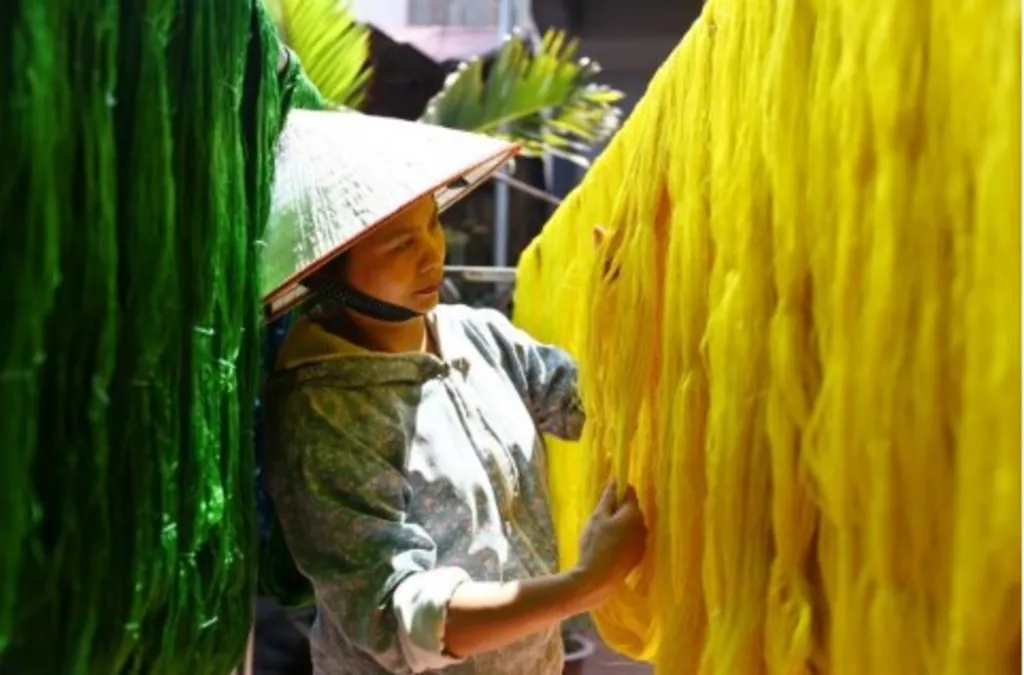 |
| TOUCHING SILK: A local woman dries silk yarn that has been dyed at a workshop in Vạn Phúc Village, Hà Nội's Hà Đông District. VNA/VNS Photo Minh Quyết |
{ "id": "6OR2kemzyr", "type": "myToolImages", "data": { "data": "" } }
For thousands of years, sericulture and silk production have been closely associated with Vietnamese historical, cultural and social development.
Silk has become part of national cultural and social life, helping confirm the beauty of Việt Nam, appearing in many events at home and abroad, often through the image of the national costume áo dài (traditional long dress).
Việt Nam is one of the world's top six silk producers, the third largest silk exporter in Asia, and the sixth in the world. With its own identity, Việt Nam has a long tradition of silk production and silk weaving.
However, the Vietnamese silk brand is faint on the world map, a silent shadow behind foreign big brands. This concerns those who make Vietnamese silk, love traditional values and have national pride.
Experts and businesses say Vietnamese silk is highly valued worldwide for its unique qualities, but the country is not a global hub of prestige.
"While Vietnamese silk fabric is exported and ordered by the world’s leading fashion brands, the country is not on the world’s silk map. Products made in Việt Nam are often sold in the international market under foreign brands," according to Huỳnh Tấn Phước, chairman of the Board of Members of Vietnam Silk House.
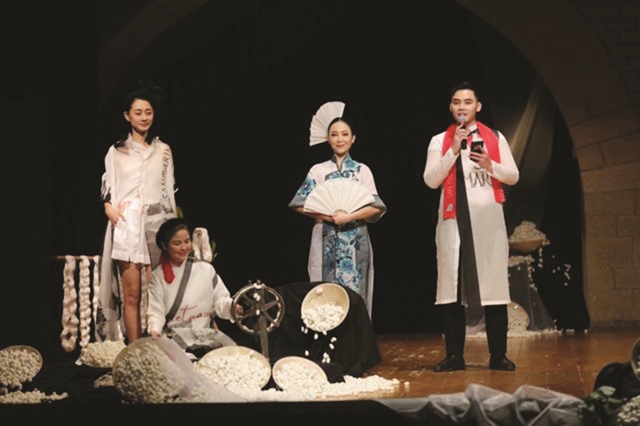 |
| IN THE SPOTLIGHT: A fashion collection made of Bảo Lộc silk is performed with silkworm cocoons stretching at a show in San Marino in October. Photo courtesy of Vietnam Silk House |
Vietnamese silk has a high-quality standard with the best foundations in Southeast Asia but is often exported in raw materials or through an intermediary. Thus, most consumers could not recognize a brand name of Vietnamese silk, Phước tells Việt Nam News.
Minh Hạnh, a fashion designer, tells Tiền Phong (Vanguard) newspaper that a paradox occurs within Vietnamese silk. "It is impossible to find a 'Made in Vietnam' silk product in the global market because Vietnamese silk is exported under world-famous brand names. It is a disadvantage for the country," she says.
International Silk Union Secretary General Fei Jianming agrees that the country has yet to become a strong brand globally as it mainly exports silk yarn rather than finished products.
There are numerous reasons for this, but low, competitive capacity, inadequate cooperation among domestic producers, and a lack of effective management and relevant support policies are the driving factors.
Experts say the country's silk industry needs to focus on expanding sericulture areas, investing more in high-tech production and encouraging locals to apply new advances in sustainable mulberry cultivation and weaving.
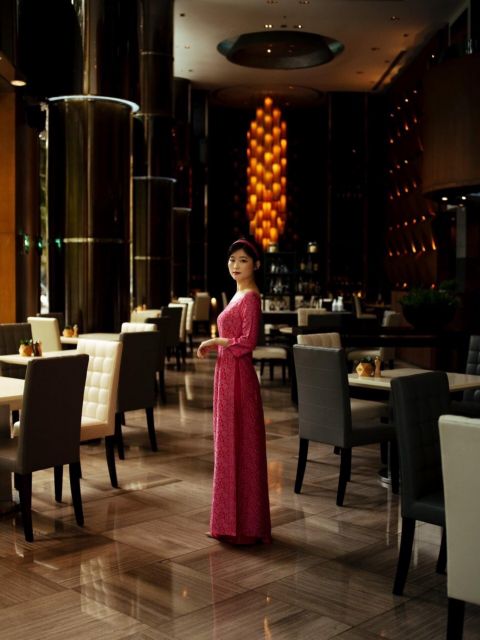 |
| ELEGANCE: Japanese actress Akari Nakatani in her áo dài made of silk, a design by Gấm Vóc. Akari plays a role in the famous Em và Trịnh movie, which depicts the life of the late legendary Vietnamese musician Trịnh Công Sơn. Photo courtesy of Gấm Vóc |
Vũ Cẩm Giang, a Hanoian businesswoman with a deep passion for the material, says to boost silk products made in Việt Nam, domestic silk producers and the business community need to closely cooperate in promoting their products while exporting worldwide.
"Strict management is also needed for the domestic market, which is now developing randomly and spontaneously with abundant imported materials with unclear origins," Giang tells Việt Nam News.
"It is tough for consumers to identify real products made with local Vietnamese materials, even those made in Vạn Phúc, a long-existing silk weaving village in Hà Nội. Only a few shops there sell high quality silk."
Giang spent many years researching Vietnamese silk before engaging in her own business in the industry. She is now CEO and founder of Gấm Vóc, a young local brand with the primary goal of promoting the beauty of áo dài fashion as well as preserving traditional silk culture.
Phước says it is necessary to gather business enterprises with a standard motto to bring Vietnamese silk to the world and create opportunities for foreign consumers to access many different brands in Việt Nam.
The businessman says a boost of investment in improving production and labour, with more application of high technology, are needed to increase quality, along with a focus on creativity in designs,
"As a solution, Vietnam Silk House has been established by a group of famous producers and designers to promote high-quality silk 'Made in Việt Nam' to the world," he says.
"It is more than the silk business; it is about the Vietnamese brand name. Vietnam Silk House is a venue for producers to share experience in the industry and learn from each other, creating diversity for products in the future."
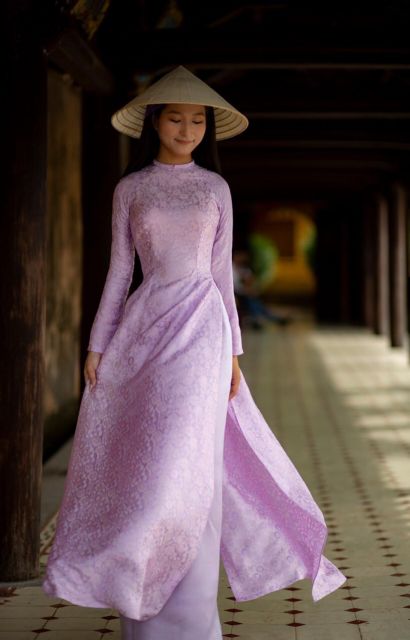 |
| SIMPLICITY: The beauty of a Vietnamese woman shines in an áo dài designed and produced by Gấm Vóc silk. Photo courtesy of Gấm Vóc |
According to the Việt Nam Mulberry Association, the material has become more and more favoured in the world market, with the value of the raw silk market alone estimated at US$20 billion.
Since domestic production faced an increasing shortage of materials, Việt Nam has imported about 1,000 tonnes of materials from China and Brazil to make products for export. However, the industry will likely undergo rapid modernisation in the coming years.
A Việt Nam Sericulture Research Centre report says the country is gradually overcoming its continuous materials decline. The cultivation of mulberry [whose leaves are used to feed silkworms] has increased rapidly from 8,200ha in 2016 to 13,200ha in 2021. A total of 16,500 tonnes of silkworm cocoon was produced in 2021 nationwide, marking a 10 per cent increase over the previous year. In 2019, the country's total silkworm production stood at only 11,855 tonnes.
Jumping abroad
Among Việt Nam’s traditional silk farming regions, including villages existing for over 10 centuries, such as Vạn Phúc in Hà Nội's Hà Đông District, Nam Cao in the northern province of Thái Bình, and Nha Xá in the province of Hà Nam, those in the Central Highlands province of Lâm Đồng's Bảo Lộc District have an important role to play in bringing 'Made-in-Vietnam' silk to the world.
"Today, I think only Bảo Lôc could become a prestigious locality that provides real 'Made-in Việt Nam' products to the lucrative world export market," says Giang.
"Natural products are often soft and smooth. They can absorb sweat, keep cool in summer, warm in winter and be durable over time. The silk material made in Bảo Lộc can meet all such quality, at the same time often have creativity in designs and production with new, advanced technology."
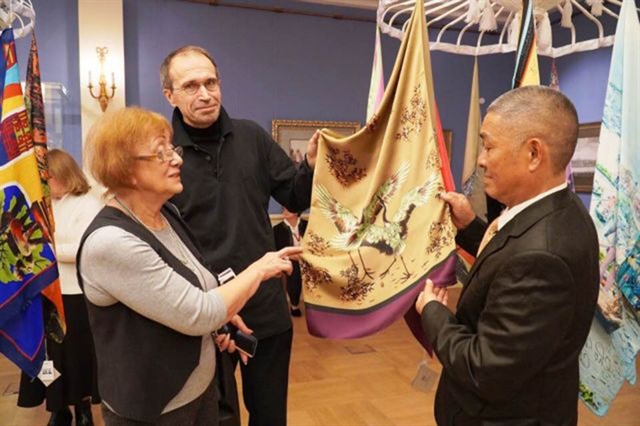 |
| BROWSING: A high quality silk scarf with special design and pattern made in Bảo Lộc is introduced to foreign visitors from Russia. Photo courtesy of Vietnam Silk House |
Bảo Lộc is considered the capital of silk production in the country. It is home to many large factories and private workshops. Some estimates say that more than 80 per cent of domestic production will come from Lâm Đồng in the future.
In the 1960s, Japanese experts discovered regions which had geographical conditions suited to develop the industry, including Gia Lai, Kon Tum and Lâm Đồng's three districts of Đức Trọng, Di Linh and Bảo Lộc.
After five decades, Bảo Lộc has left its imprint on the nation’s and region’s silk industry. It is famous not only for its enormous production base but for its premium quality.
Products made in Bảo Lộc have been showcased at many domestic and international silk cultural events, including most recently in October in San Marino.
To introduce Vietnamese silk to foreigners, designer Minh Hạnh and Vietnam Silk House presented the "Silk & San Marino" fashion show featuring the shiny lines of Bảo Lộc through áo dài and fashion sets with designs based on imprints of San Marino.
The event held in October was expected to be the starting point for Vietnamese silk to take a stand on the world map. Along with Bảo Lộc silk, other local brands are also set to preserve the prestige of Vietnamese silk among domestic consumers and confirm its reputation in the market through a series of national events and celebrations.
The programme Muôn Nẻo Đường Tơ (All Silk Roads) was held on November 18 as part of a series of cultural events to celebrate National Heritage Day (November 23). The programme introduced products in the Old Quarter of Hà Nội. It featured an áo dài fashion show along with contemporary folk music performances.
A space introducing traditional silk production and the fabric weaving process in the northern delta region was also set up for visitors to experience the authentic local silk occupation. VNS
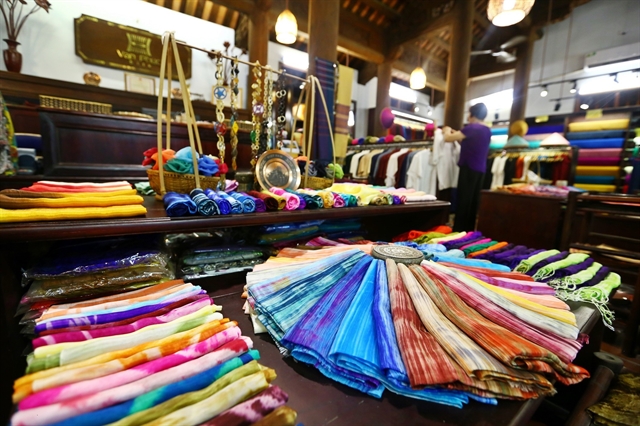 |
| RAINBOW OF COLOURS: Vạn Phúc silk items are rich in variety, and have a reputation for long-lasting quality, providing a soft and delicate feel. VNA/VNS Photo Minh Quyết |



